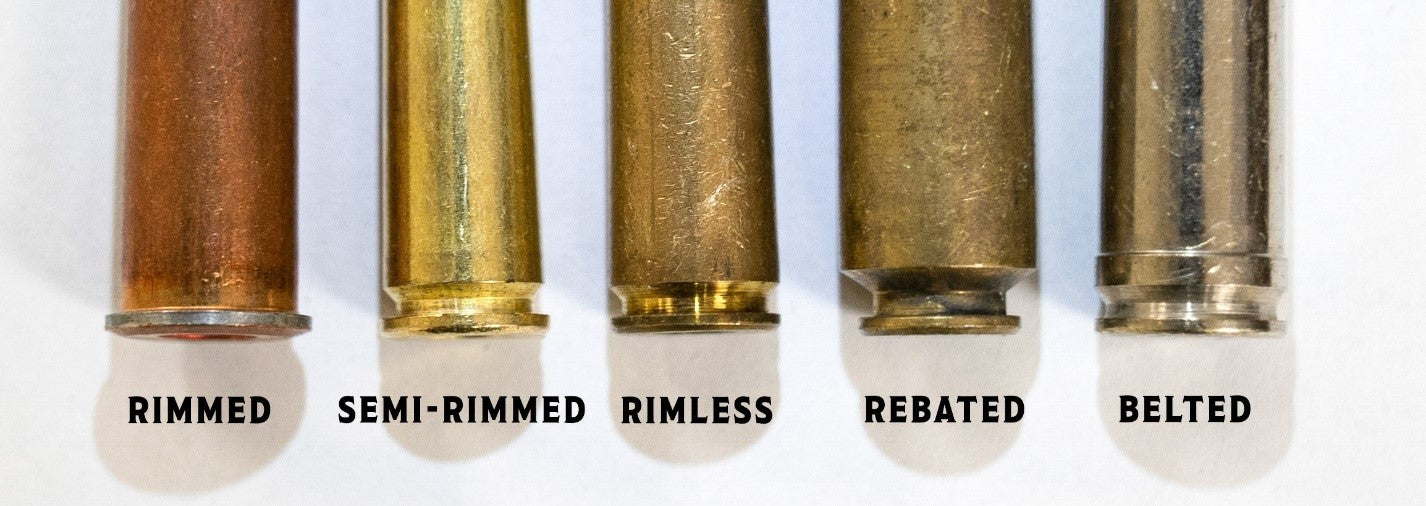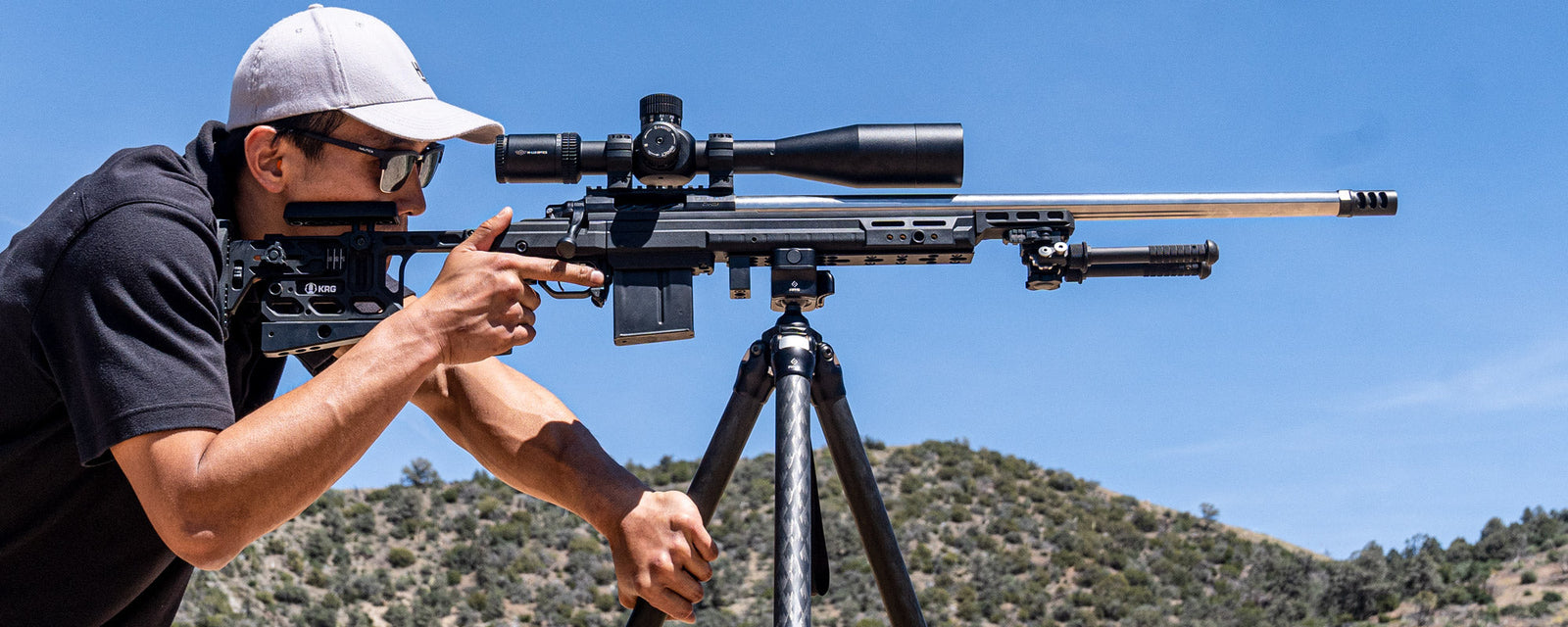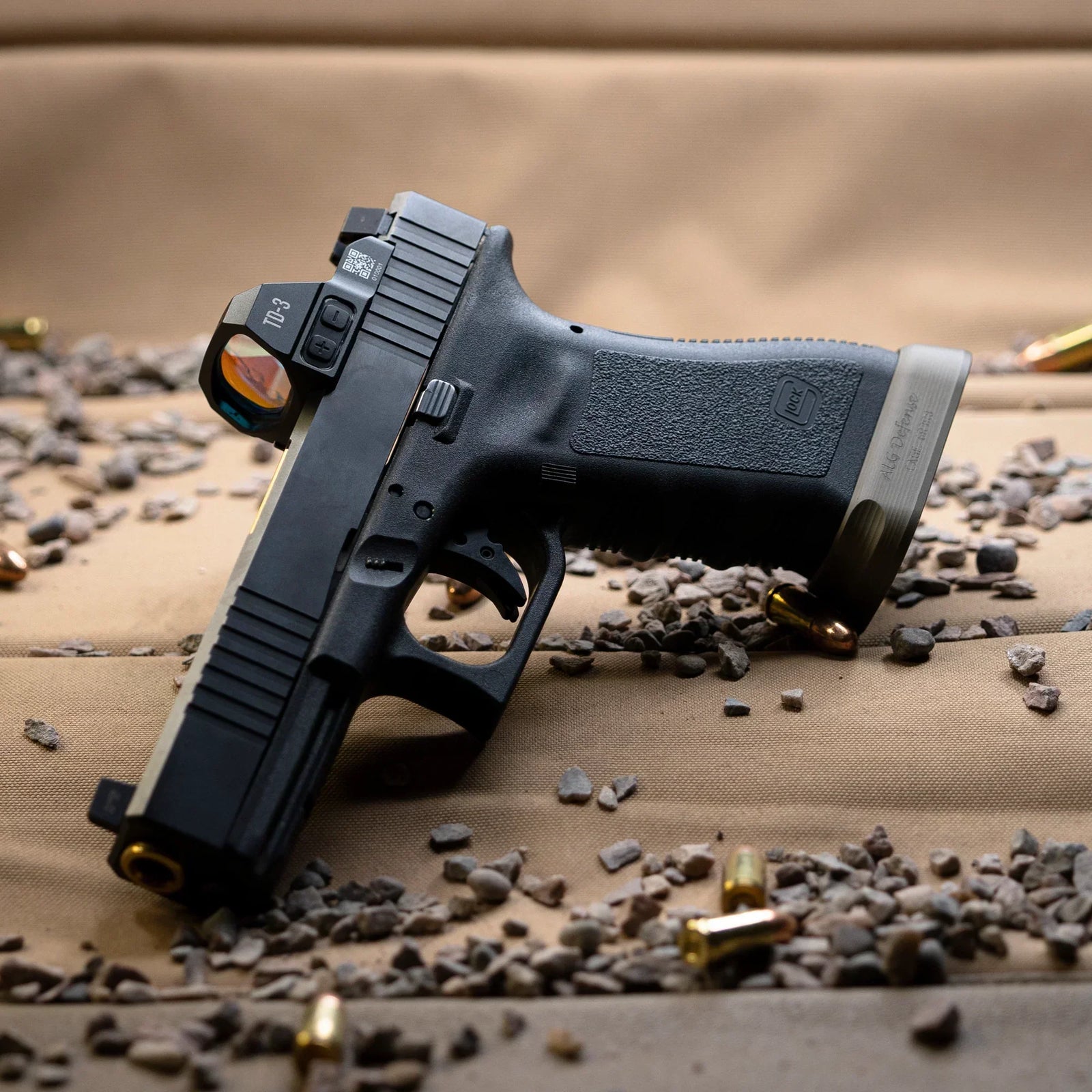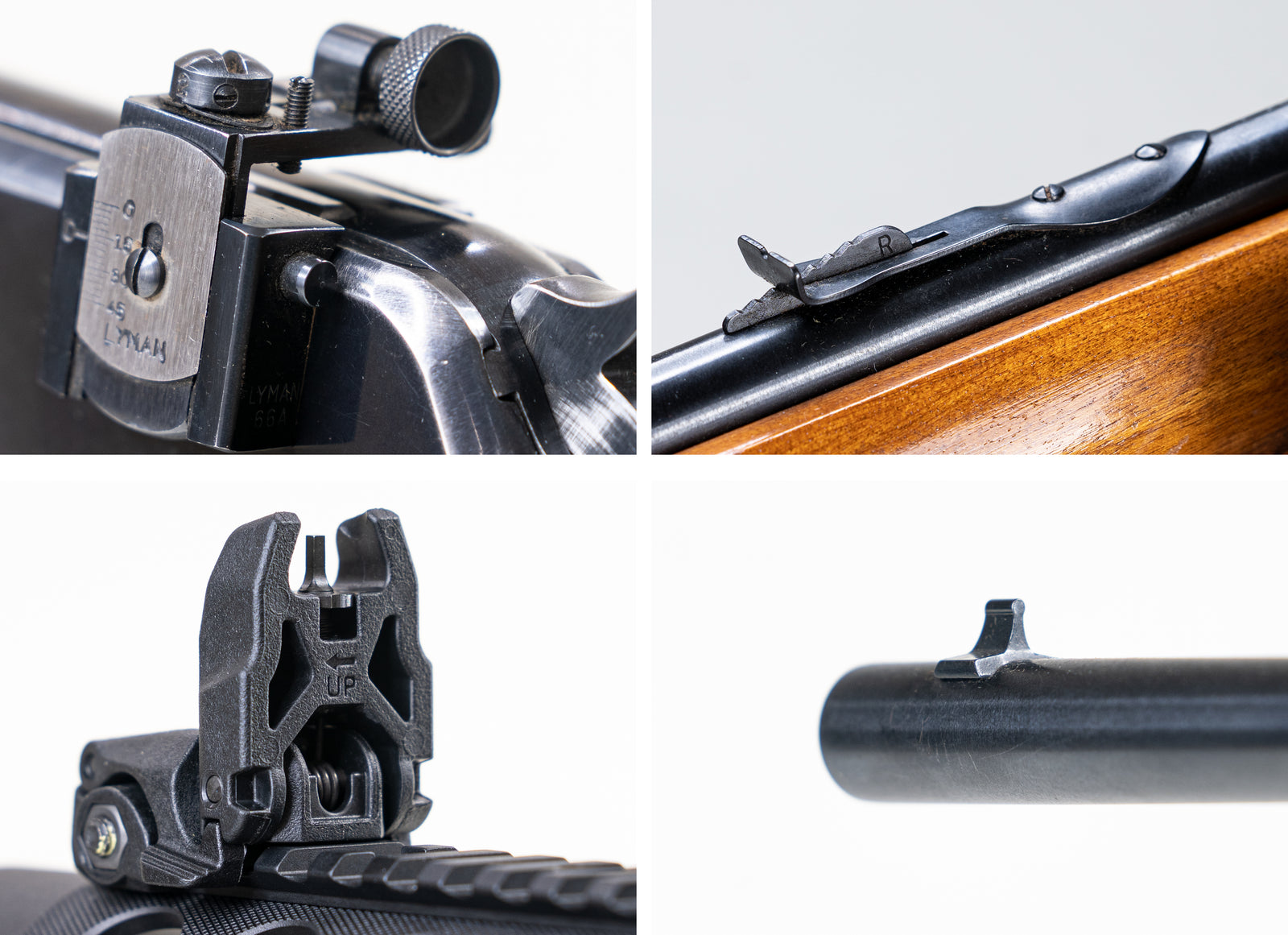The rim protrudes around the circumference of the head of the case, and is not technically a separate component of the case. I list it separately here because of the unique functions it provides. It is where the rifle’s extractor grabs the spent case to pull it from the chamber. Most centerfire cases will also have an extractor groove just above the rim, where the bolt will latch on to the case to aid in feeding and extraction. All modern cases (made within the last 150 years) will have a rim of some sort, with the shape determined by the type of cartridge you’re using.
There are five types of rims:
Rimmed - a case with a flared rim of noticeably greater diameter than the case, typically without an extractor groove.
Semi-rimmed - a case with a flared rim only slightly wider than the case, and an extractor groove just above the rim.
Rimless - a case where the rim is the same diameter as the case (or up to 0.001” wider), with an extractor groove just above the rim.
Rebated - a case with a rim of smaller diameter than the cartridge, with a distinct extractor groove between the rim and the case’s base.
Belted - a case with a thicker belt a small distance above the extractor groove.

The five types of rims.
Not every case will have an extractor groove, but every modern case will have a rim. For example, straight-walled cases such as .22 and .45-70 have no extractor groove. They do, however, have a prominent rim. There is always a way for the rifle to grip the case and extract it.
In certain rare cases, the rim may tear away from the rest of the case during extraction. This is known as a case head separation. This leaves a difficult-to-extract cartridge with nothing easy to pull on. A case head separation may be caused by a rough chamber, which has too much friction on the walls of the cartridge case. If the action of the rifle is working quickly, it may attempt to extract the case while still hot and malleable. If you’re shooting reloaded ammo, the case may be stretched and worn out after too many uses.
However the separation occurs, it must be remedied before the rifle can be considered reliable again. Figuring out the cause may take some research and plenty of advice from experienced shooters. If the fault lies in the cartridge itself, then the solution is simply stop using that batch of ammunition. If the fault is in the rifle, modifications and repair may require the employment of a gunsmith.
If you’re lucky, the remaining shell is loose in the chamber and can be easily pushed out by a cleaning rod. Alternatively, it may also need to be removed by the same gunsmith that fixes the underlying cause. Whatever you do, don’t go digging around with a pair of pliers. Scratching your chamber won’t help.
Case head separations are incredibly uncommon. They’re more likely to occur in semi-automatic actions, which can put impressive amounts of force into the extraction of a spent cartridge. In rifles such as a bolt action, the amount of manual effort to pull back the bolt will be an early indicator that something is amiss. As long as your rifle is in good working order and your cases aren’t overused, you may never actually encounter a case head separation.
Whichever cartridge your rifle is built to handle will have a predetermined rim shape and size. This isn’t something that affects the ballistics of your round, nor is it something to worry about fiddling with. Knowing the rim style of your cartridges may aid in identifying rounds in the event of a mix-up.
Generally speaking, rimmed rounds do not work well in a rifle that uses detachable or box magazines. The rims can overlap in the magazine and get caught up on each other. Manufacturers have learned this over the years, and nowadays avoid making certain styles of rifles for rimmed rounds. You can still find rifles with tubular magazines that use rimmed rounds (such as a lever action firing .30-30 WCF), as the rims don’t pose a problem in a tube mag.





Leave a comment (all fields required)